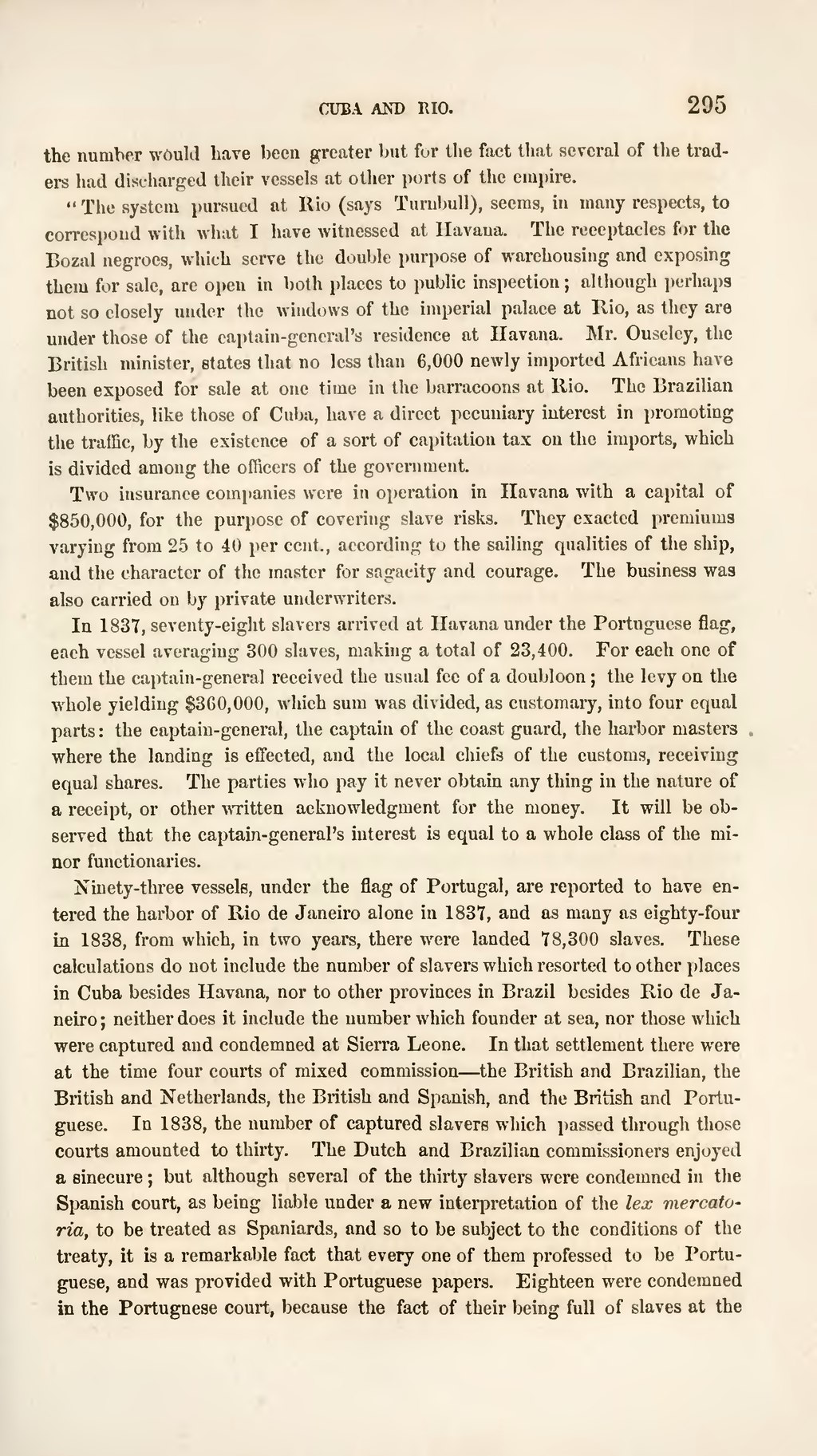the number would have been greater but for the fact that several of the traders had discharged their vessels at other ports of the empire.
"The system pursued at Rio (says Turnbull), seems, in many respects, to correspond with what I have witnessed at Havana. The receptacles for the Bozal negroes, which serve the double purpose of warehousing and exposing them for sale, are open in both places to public inspection; although perhaps not so closely under the windows of the imperial palace at Rio, as they are under those of the captain-general's residence at Havana. Mr. Ouseley, the British minister, states that no less than 6,000 newly imported Africans have been exposed for sale at one time in the barracoons at Rio. The Brazilian authorities, like those of Cuba, have a direct pecuniary interest in promoting the traffic, by the existence of a sort of capitation tax on the imports, which is divided among the officers of the government.
Two insurance companies were in operation in Havana with a capital of $850,000, for the purpose of covering slave risks. They exacted premiums varying from 25 to 40 per cent, according to the sailing qualities of the ship, and the character of the master for sagacity and courage. The business was also carried on by private underwriters.
In 1837, seventy-eight slavers arrived at Havana under the Portuguese flag, each vessel averaging 300 slaves, making a total of 23,400. For each one of them the captain-general received the usual fee of a doubloon; the levy on the whole yielding $300,000, which sum was divided, as customary, into four equal parts: the captain-general, the captain of the coast guard, the harbor masters where the landing is effected, and the local chiefs of the customs, receiving equal shares. The parties who pay it never obtain any thing in the nature of a receipt, or other written acknowledgment for the money. It will be observed that the captain-general's interest is equal to a whole class of the minor functionaries.
Ninety-three vessels, under the flag of Portugal, are reported to have entered the harbor of Rio de Janeiro alone in 1837, and as many as eighty-four in 1838, from which, in two years, there were landed 78,300 slaves. These calculations do not include the number of slavers which resorted to other places in Cuba besides Havana, nor to other provinces in Brazil besides Rio de Janeiro; neither does it include the number which founder at sea, nor those which were captured and condemned at Sierra Leone. In that settlement there were at the time four courts of mixed commission — the British and Brazilian, the British and Netherlands, the British and Spanish, and the British and Portuguese. In 1838, the number of captured slavers which passed through those courts amounted to thirty. The Dutch and Brazilian commissioners enjoyed a sinecure; but although several of the thirty slavers were condemned in the Spanish court, as being liable under a new interpretation of the lex mercatoria, to be treated as Spaniards, and so to be subject to the conditions of the treaty, it is a remarkable fact that every one of them professed to be Portuguese, and was provided with Portuguese papers. Eighteen were condemned in the Portuguese court, because the fact of their being full of slaves at the

